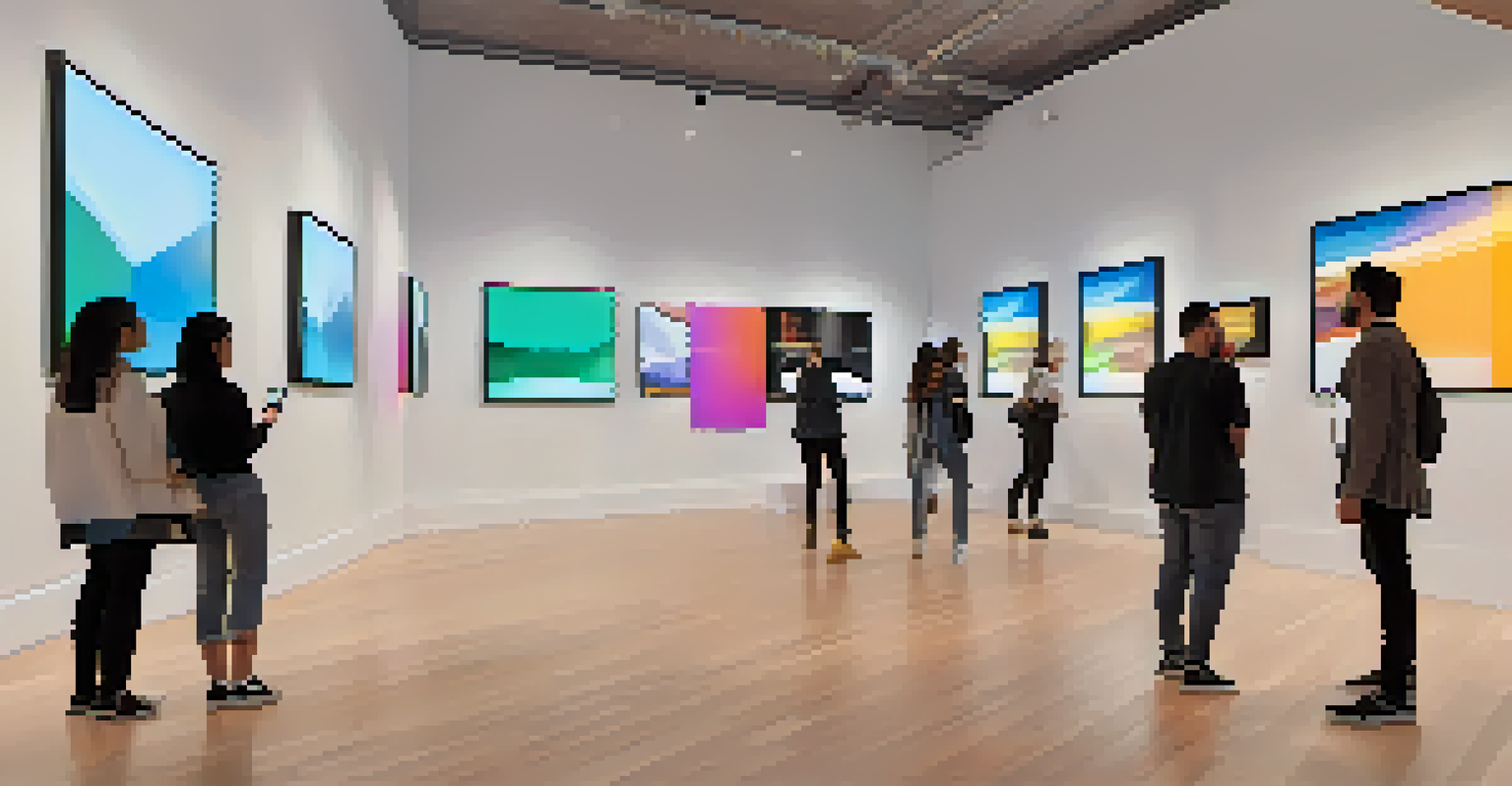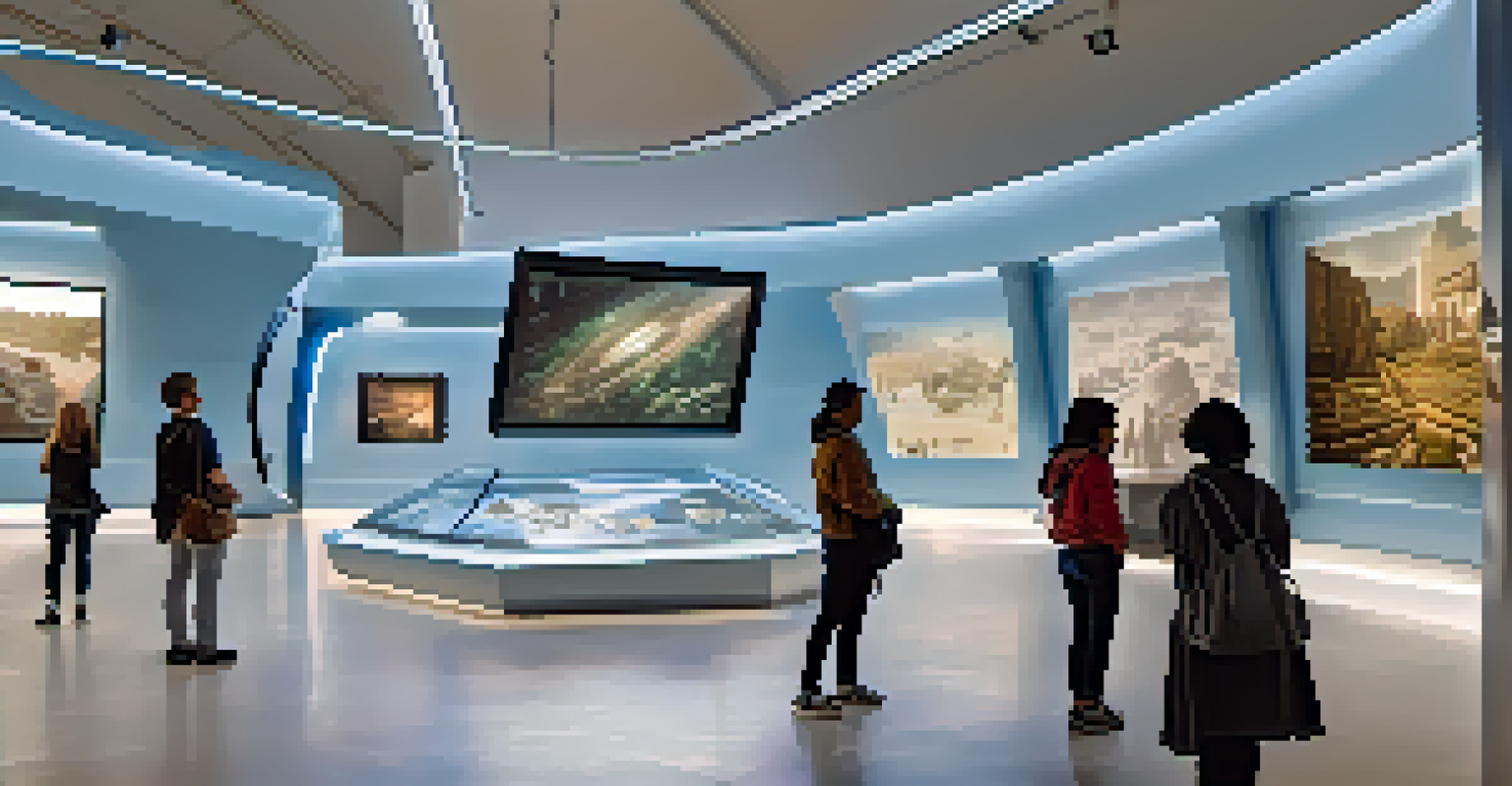Ethereum as a Backbone for Augmented Reality Applications

Understanding Ethereum and Augmented Reality Basics
To appreciate the synergy between Ethereum and augmented reality (AR), we first need to grasp what each one represents. Ethereum is a decentralized blockchain platform that enables developers to build smart contracts and decentralized applications (dApps). On the other hand, augmented reality overlays digital information onto the real world, enhancing user experiences through interactive elements. When these two technologies converge, they create limitless possibilities for innovation.
The great thing about blockchain technology is that it provides an environment of trust. You can verify transactions without needing a central authority.
Imagine walking through a city and using your smartphone to see historical facts pop up as you pass by landmarks. This seamless integration of digital content into our physical environment exemplifies AR's transformative potential. By leveraging Ethereum's secure and transparent structure, developers can create AR applications that are not only engaging but also trustworthy, ensuring that users have reliable experiences.
As we delve deeper into this fascinating intersection, we will uncover the ways Ethereum can empower AR applications, providing a robust framework for their development and scalability. This exploration will reveal not just the technology behind it but also the real-world applications that could benefit society at large.
Smart Contracts: The Heart of Ethereum's Functionality
At the core of Ethereum's capabilities are smart contracts—self-executing contracts with the terms written into code. These digital agreements operate on the blockchain, ensuring transparency and security without the need for intermediaries. For AR applications, smart contracts can facilitate transactions, manage user permissions, and ensure that digital assets are transferred securely between parties.

For instance, think of an AR game where players can buy, sell, or trade virtual items. Smart contracts can automate these transactions, verifying ownership and ensuring that the terms of the sale are honored, all without requiring a central authority. This not only streamlines the process but also builds trust among users, knowing that their transactions are backed by blockchain technology.
Ethereum Empowers AR Innovation
The combination of Ethereum's blockchain technology and augmented reality creates new opportunities for secure and engaging user experiences.
Furthermore, the use of smart contracts can foster innovation in AR by enabling developers to create more complex interactions and economic models within their applications. As we continue to explore this topic, we'll see how these mechanisms create a more interactive and rewarding experience for users.
Decentralization: Enhancing Trust in AR Experiences
One of the most appealing aspects of Ethereum is its decentralized nature, which stands in contrast to traditional centralized platforms. In a decentralized system, no single entity controls the data, leading to increased security and reduced risks of manipulation. This is particularly relevant for AR applications, where user-generated content can be vulnerable to tampering.
Augmented reality will enable us to see the world in a different light, blending the physical and digital worlds into one.
Consider an AR platform that allows users to create and share content. By utilizing Ethereum's blockchain, all contributions can be verified and attributed to their original creators. This fosters a sense of community and encourages users to share their creativity without fear of having their work stolen or misrepresented.
Moreover, decentralization can enhance user privacy, as individuals can interact without surrendering their personal data to a central authority. This shift not only empowers users but also encourages the development of AR applications that prioritize ethical considerations, ultimately leading to a healthier digital ecosystem.
NFTs: Unlocking New Possibilities in Augmented Reality
Non-fungible tokens (NFTs) have taken the digital world by storm, representing unique digital assets verified through blockchain technology. In the realm of AR, NFTs can be used to create ownership of virtual items, art, or experiences that users can access through their devices. This introduces a new layer of economic potential for creators and users alike.
Imagine an AR art gallery where each piece of art is an NFT. Visitors could purchase these digital artworks, not just for display but to interact with in augmented reality. This creates a unique experience where ownership is clear, and the value of digital creations can be recognized and traded, much like physical art.
Smart Contracts Enhance AR Functionality
Smart contracts facilitate secure transactions and interactions within AR applications, building trust and streamlining processes for users.
By integrating NFTs into AR, developers can create vibrant ecosystems that support artists and content creators. The ability to buy, sell, and showcase unique digital assets opens up new avenues for creativity and revenue generation, transforming the AR landscape into an exciting marketplace.
Creating Interoperable AR Experiences with Ethereum
Interoperability refers to the ability of different systems and applications to communicate and work together seamlessly. In the context of AR, this means that digital assets and experiences could be accessed across various platforms, enhancing user engagement. Ethereum's standardized protocols can facilitate this interoperability, allowing developers to create AR applications that connect and share assets.
For example, imagine a user who has purchased a virtual outfit for their avatar in one AR game. With interoperability, that same outfit could be worn in different games or platforms, creating a cohesive experience that transcends individual applications. This not only enriches the user experience but also increases the utility of digital assets.
By fostering a more interconnected AR ecosystem, Ethereum can help developers innovate and create richer, more engaging experiences for users. As we explore further, we will see how this interconnectedness can drive the growth of AR applications and attract a broader audience.
The Future of AR and Ethereum: What Lies Ahead?
As we look toward the future, the potential for Ethereum to shape the landscape of augmented reality is immense. With ongoing advancements in blockchain technology and AR capabilities, we can expect more sophisticated applications that blend our physical and digital worlds. This evolution could lead to transformative experiences in various sectors, from gaming and education to real estate and tourism.
Imagine walking through a museum where each exhibit is enriched with augmented reality content, enhanced by Ethereum's blockchain for transparency and authenticity. Visitors could interact with artifacts in ways that were previously unimaginable, gaining insights and knowledge through immersive experiences. This is just the tip of the iceberg regarding what the future holds.
Decentralization Builds User Trust
Ethereum's decentralized nature enhances the security and authenticity of user-generated content in AR applications, fostering a creative community.
By embracing Ethereum as a backbone for AR applications, developers can not only push the boundaries of creativity but also contribute to a more secure, decentralized, and user-centric digital future. As we continue to innovate, the collaboration between these technologies promises to redefine how we perceive and interact with the world around us.
Challenges and Considerations in Building on Ethereum
While the potential of Ethereum in AR is exciting, there are challenges that developers must navigate. Issues such as network congestion, scalability, and transaction fees can impact the usability of applications. For instance, during peak times, Ethereum's network can slow down, leading to delays in transactions and affecting user experience.
Moreover, developers need to consider the environmental impact of blockchain technology. Although Ethereum is transitioning to a proof-of-stake model to reduce energy consumption, concerns remain about the sustainability of blockchain solutions. It’s crucial for developers to think critically about how to create applications that are both innovative and environmentally responsible.

Despite these challenges, the desire for innovation drives the Ethereum community to find solutions. By addressing these hurdles head-on, developers can create AR applications that not only leverage the strengths of Ethereum but also contribute positively to the broader digital landscape.